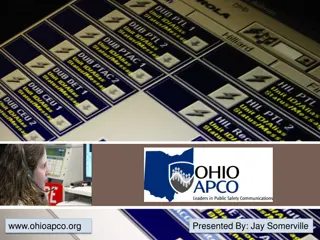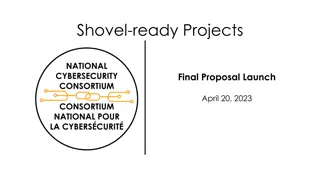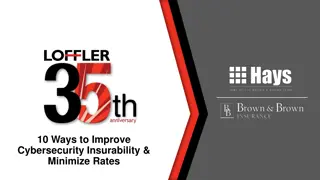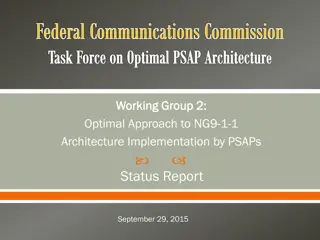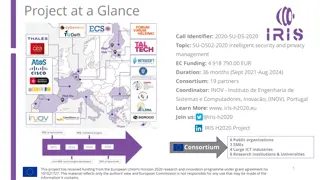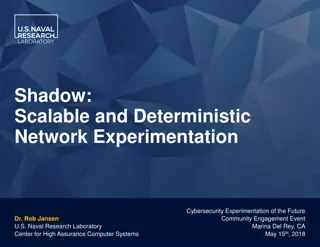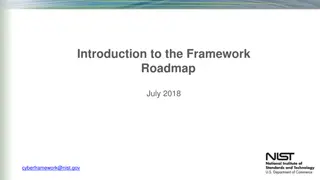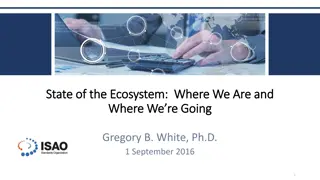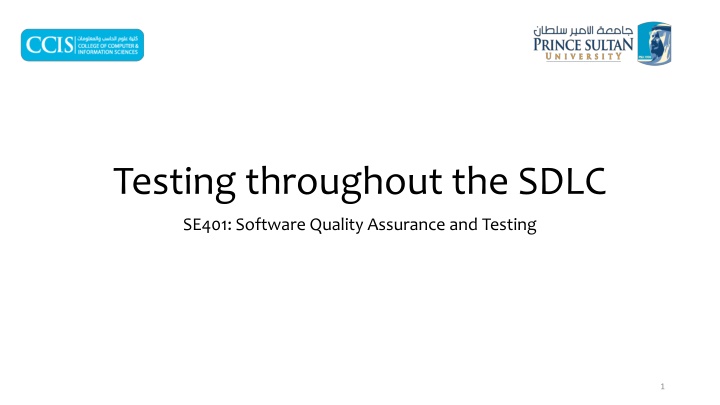
Optimal Approach for PSAPs Cybersecurity Report
The FCC Task Force's recommendations on cybersecurity practices for Public Safety Answering Points (PSAPs), addressing current threats and vulnerabilities in the evolving 9-1-1 environment. Learn about methodologies, scopes, and best practices to safeguard critical infrastructure for life-saving services."
Download Presentation

Please find below an Image/Link to download the presentation.
The content on the website is provided AS IS for your information and personal use only. It may not be sold, licensed, or shared on other websites without obtaining consent from the author. If you encounter any issues during the download, it is possible that the publisher has removed the file from their server.
You are allowed to download the files provided on this website for personal or commercial use, subject to the condition that they are used lawfully. All files are the property of their respective owners.
The content on the website is provided AS IS for your information and personal use only. It may not be sold, licensed, or shared on other websites without obtaining consent from the author.
E N D
Presentation Transcript
Testing throughout the SDLC SE401: Software Quality Assurance and Testing 1
Outline Software development models Test Levels Test Types Maintenance testing 2
Software development models Testing is important in the software development life cycle The life cycle model will determine how to organize the testing Testing is highly related to software development activities 3
Testing is focused on Verification Is the deliverable built according to the specifications? Validation Is the deliverable fit for purpose, e.g. does it provide a solution to the problem? 4
The V model Testing needs to begin as early as possible in the life cycle. Testing can be integrated into each phase of the life cycle. Within the V-model, validation testing takes place especially during the early stages ,i.e. reviewing the user requirements and late in the life cycle, i.e. during user acceptance testing 7
Iterative-incremental development model Iterative-incremental development is the process of establishing requirements, designing, building and testing a system carried out as a series of shorter development cycles. An increment, added to others developed previously, forms a growing partial system, which should also be tested. Regression testing is increasingly important to all iteration phases after the first one. 8
Testing within a life cycle model In any life cycle model, there are several characteristics of good testing: Every development activity has a corresponding testing activity Each test level has test objectives specific to that level. The analysis & design of tests for a given test level should begin during the corresponding development activity Testers should be involved in reviewing documents as soon as drafts are available in the development life cycle Test levels can be combined or reorganized depending on the nature of the project or the system architecture 9
Test Levels Acceptance: is the responsibility of the customer in general. The goal is to gain confidence in the system System: The behavior of the whole product as defined by the project scope Integration: Interfaces between components ; interactions with other systems (OS, HW, ..) Unit: Any module, program, object separately testable 11
Test Levels For each test level, please note: The generic objectives The test basis (docs/products used to derive test cases) The test objects (what is being tested) Typical defects and failures to be found Specific approaches and responsibilities 12
Component testing - objectives Verifying the functioning of software items (modules, methods, objects, classes etc.) that are separately testable Component testing includes testing of functionality and specific non functional characteristics, such as: resource behavior (e.g. memory leaks) robustness testing structural testing (e.g. branch coverage). 13
Component testing - test basis All materials that are applicable for the component under test: Specification of the component Software design The data model As well as the code itself 14
Component testing Writing code to test the project code Stubs, drivers and simulators may be used. Stubs: Code that replaces a called component in order to simulate its purpose (i.e. "hard- coded" data to replace data from a database). Drivers: Code that replaces an other software component in order to call the component under test. 15
Component testing - approaches and responsibilities Component testing usually involves the programmer who wrote the code. Defects are fixed as soon as they are found, without formal recording of incidents. TDD test-driven development prepare and automate test cases before coding used in XP (extreme programming) 17
Integration testing - objectives Tests interfaces between components Test interactions with different parts of a system, such as: the operating system file system hardware interfaces between systems 18
Integration testing - test basis Software and system design The system architecture Workflows/use cases 19
Integration testing - test objects The item under test includes Builds including some or all component of the system The database elements System infrastructure Interface between components or objects System configuration Configuration data 20
Integration testing - types Component integration Tests the interactions between software components is done after component testing System integration Tests the interactions between different systems is done after system testing. 21
Integration testing - approaches and responsibilities Start integration with those components that are expected to cause most problems. To reduce the risk of late defect discovery, integration should normally be incremental rather than big bang . Both functional and structural approaches may be used. Ideally, testers should understand the architecture and influence integration planning. Can be done by the developers or by a separate team. 22
System testing - objectives Testing the behavior of the whole system as defined by the scope of the project. 23
System testing - test basis System requirements specification , both functional and non functional Business processes Risk analysis Use cases Other high level descriptions of the system behavior, interactions with OS/system resources Requirements may exist as text and/or models. Testers also need to deal with incomplete or undocumented requirements. 24
System testing - test objects The entire integrated system User manuals Operation manuals System configuration information Configuration data 25
System testing - approaches and responsibilities Test environment should correspond to the production environment as much as possible. First, the most suited black-box technique Then, white-box technique to assess the thoroughness of testing An independent test team may be responsible for the testing The level of independence is based on the applicable risk level 26
Acceptance testing - objectives The questions to be answered: Can the system be released? What are the outstanding risks? Has development met its obligations? The goal is to establish confidence in The system Non-functional characteristics of the system 27
Acceptance testing - test basis User requirements specification Use cases System requirements specification Business processes Risk analysis 28
Acceptance testing - types User acceptance testing validate the fitness for use of the system by users. Operational testing, usually done by the system administrators: testing of backup/restore disaster recovery user management maintenance tasks periodic checks of security vulnerabilities 29
Acceptance testing - types Contract and regulation acceptance testing performed against a contract s acceptance criteria (i.e. governmental, legal or safety regulations) Alpha and beta testing Alpha testing is performed at the developing organization s site. Beta testing (field testing), is performed by people at their own locations. Both are performed by potential customers, not the developers of the product. 30
Acceptance testing - responsibilities Customers or users of a system Stakeholders may be involved 31
Test Types What the system does: Suitability Interoperability Security Accuracy Compliance How the system works: Performance, Load, Stress Reliability Usability Efficiency Maintainability Portability Non- Functional Functional Related to Changes Structural Confirmation Testing Regression Testing Code Coverage 32
Functional testing (Black box testing) Objectives Test what a system should do and consider the external behavior of the software. Test levels May be performed at all test levels Test basis The expected behavior description can be found in work products such as: requirements specification business processes use cases functional specifications may be undocumented 33
Non functional testing Objectives Measuring characteristics of software that can be quantified on a varying scale: e.g. response times for performance testing Test levels May be performed at all test levels You can find more about them in Software Engineering Software Product Quality (ISO 9126). 34
Structural testing (white box testing) Objectives Measuring the thoroughness of testing through assessment of the coverage of a set of structural elements or coverage items. Test levels May be performed at all test levels, but especially in component testing and component integration testing. 36
Structural testing (white box testing) Test basis Structural testing is based on the structure of the code as well as the architecture of the system (e.g. a calling hierarchy, a business model or a menu structure) Approach Structural techniques are best used after specification-based techniques, in order to help measure the thoroughness of testing. Tools Coverage measurement tools assess the percentage of executable elements(e.g. statements or decision outcomes) that have been exercised. 37
Testing related to changes, confirmation and regression testing Confirmation testing After a defect is detected and fixed, the software should be retested to confirm that the original defect has been successfully removed. Regression testing The repeated testing of an already tested program, after modification, to discover any defects introduced or uncovered as a result of the change(s). 38
Testing related to changes Objective To verify that modifications in the software or the environment have not caused unintended side effects and that the system still meets its requirements. Test levels May be performed at all test levels, applies to functional, non-functional and structural testing. 39
Testing related to changes Approach The extent of regression testing is based on the risk of finding defects in software that was working previously. Regression test suites are run many times and generally evolve slowly, so regression testing is a strong candidate for automation. If the regression test suite is very large it may be more appropriate to select a subset for execution. 40
Maintenance testing Objectives Maintenance testing is done on an existing operational system , and is triggered by modifications migration, or retirement of the software or system. 41
Maintenance testing - types Modifications Planned enhancement changes(e.g. release-based) Corrective and emergency changes (patches) Changes of environment (operating system or database upgrades) Migration (e.g. from one platform to another) operational tests of the new environment tests on the changed software. Retirement of a system The testing of data migration or archiving if long data-retention periods are required. 42
Maintenance testing Scope The scope of maintenance testing is related to: the risk of the change the size of the existing system the size of the change Test levels Depending on the changes, maintenance testing may be done at any or all test levels and for any or all test types. 43
Maintenance testing Approach Determining how the existing system may be affected by changes is called impact analysis, and is used to help decide how much regression testing to do. Note Maintenance testing can be difficult if specifications are out of date or missing. 44


